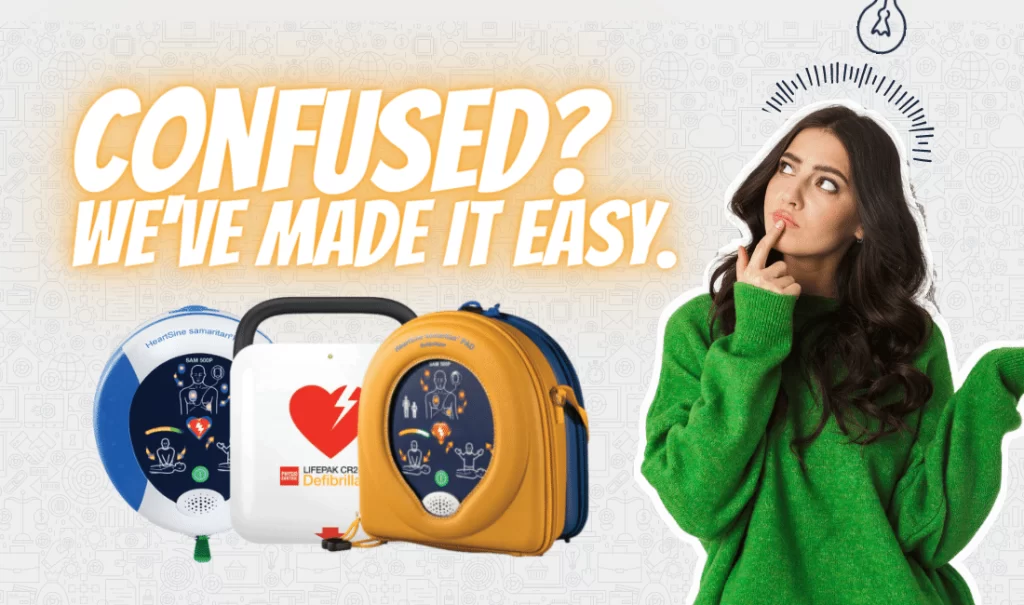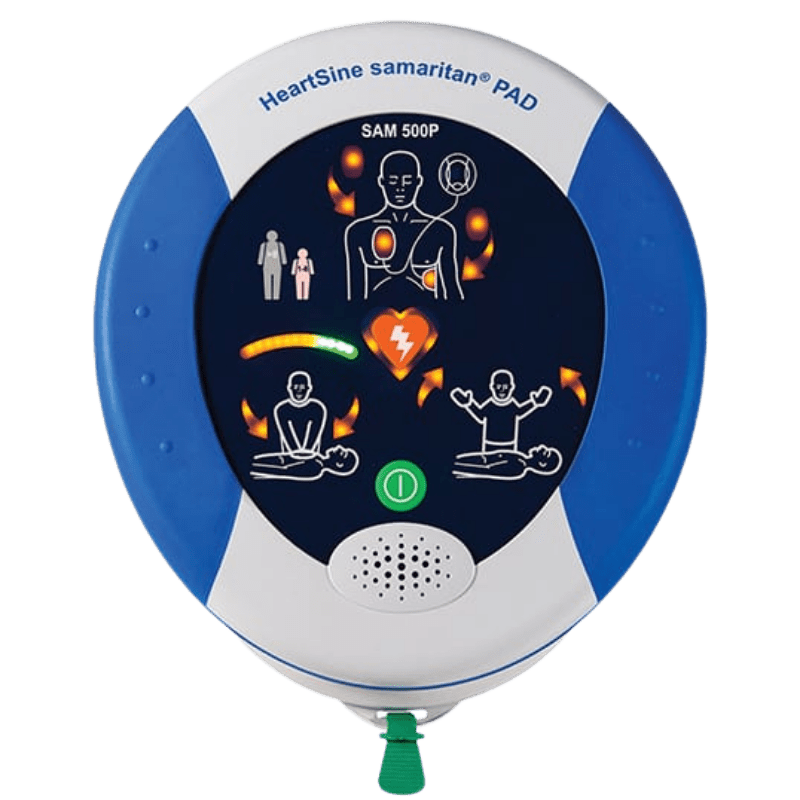The Ultimate Guide to Defibrillators
If everyone had quick access to a defibrillator we could save 22,000 more Australians each year. That’s huge. That’s our colleagues, grandparents, children and friends.
We get that defibrillators can seem confusing, so this guide makes them easy.
You’ll learn why they matter, how they work and how to use them
How Do Defibrillators Work?
Your heart’s rate and rhythm are controlled by electrical signals. When these electrical signals malfunction, the heart enters what is called ventricular fibrillation. Basically, it starts to quiver and is unable to function properly. The lack of a proper heartbeat causes a person to become unconscious and stop breathing.
What causes a cardiac arrest? It’s not just heart attacks. Many people have a genetic condition called SCA. (Sudden Cardiac Arrest) This genetic issue can cause someone to have a cardiac arrest at any time, no matter what their age or health. Serious trauma from an accident, drowning and breathing problems, and electrical shock can also cause someone to have a cardiac arrest.
How do Defibrillators help? A defibrillator is used to provide a controlled electrical shock to the heart. When a heart is “quivering” this controlled shock can cause the heart to reset itself and start pumping normally.
Are they hard to use? No! They’re easy? Can you accidentally shock someone with a heart thats working properly? You can read the answer in this article about when Defibrillators shock.
Why you should get a defibrillator?
We’ve already established that AED’s save lives. But just how many lives? Each year, between 20-30,000 people in Australia have a cardiac arrest out of the hospital. Only around 8 percent will survive.
Each minute someone has to receive Defibrillation their chance of survival drops. Studies have shown that if everyone had access to a Defibrillator within 3 minutes, 70-80% of people could be saved. You can read about one of those studies held at casinos in our article AEDS: Your best “bet” for survival. Imagine 22,000 lives saved yearly as opposed to the two thousand.
Another landmark study showed that for each minute in delay your chance of survival drops by 10 percent. You can learn some more key notes from that study in our article AED’s Reviving Hearts
How long would it take emergency services to get to you? It can vary. If you’d like to learn more read the article Gamechangers: AEDS vs Waiting for an Ambulance
What Defibrillator Should I get?

This is the big question. Perhaps you’ve been looking and are more confused than ever.
There are so many brands out there!
Don’t Worry. We’ve made a selector tool. Just answer a few questions to find the right defib for you.
Defibrillators can be cheaper than you think. For the price of an iphone you can save lives. There’s a bit more to it than price. We’ve written articles to compare defibs like the Heartsine 350p, 360p with the Heartsine 500p. We’ve also got the lowdown on St John Defibrillators.
What Should You Look For
When looking at Defibrillators, you will often see that some Defibrillators are called “AUTOMATIC DEFIBRILLATORS” and some are called “SEMI-AUTOMATIC” What’s the difference between the two? It’s quite simple. When a patient’s heart needs to be shocked:
Semi-Automatic defibrillators read out a warning to stand clear and then ask you to press a button to deliver a shock to the patient’s heart. Automatic Defibrillators verbally warn you to stand clear and then automatically apply the shock. Neither type is better than the other, generally choosing between the two is just a matter of preference.

Reader Technology
The stress of a life-threatening event can make it a challenge to give good quality CPR. Even 70% of medical professionals could improve their CPR quality. Some Defibrillators can help you in a stressful situation by giving you live feedback on how your CPR is going.
For example, they can tell you to “push harder” and “push faster.” In the industry, we call this “Reader Technology.” At DDI Safety, this is one of our favorite features.
If you’re interested in this feature it’s worth checking out the Heartsine 500p or Zoll AED 3

Child Mode
In places like schools and childcare centres, there is a possibility children may need defibrillation.. Children under 8 have more delicate bodies, and if possible a reduced shock should be given to them.
Our Lifepak models have what is called “Child Mode.” When using the defibrillator, pressing the child mode button will adjust the shock to a suitable voltage for children.
On our Heartsine models, you can purchase an optional add on “pediatric pad-pak.” It inserts into your defibrillator and adjusts the shock voltage down. It also has smaller pads that make it easier to position the pads on children.

Wifi Connectivity
If you manage safety for a large company and need to check on the status of Defibrillators in a variety of locations, a feature that could help you is WIFI connectivity. Defibrillators with WIFI connectivity can alert you when maintenance is required, or when a Defibrillator has been used.
The Lifepak CR2 models (excluding essential models) have inbuilt wifi connectivity. On on any of our Heartsine Defibrillators, you can add on the wifi gateway to enable connectivity.
What’s Next?
Thanks for taking the time to read our Ultimate Guide to Defibrillators!
We hope we have been able to help you get a better understanding of these lifesaving devices. What’s next?
Why not browse our range of Defibrillators.
We’ve made a helpful tool to help you find the right one for your needs.
Further Reading and References
First Aid Guidelines
Australian Resuscitation Council Guildelines
https://resus.org.au/guidelines/
Accidental Health & Safety’s Ultimate Guide to DRSABCD
https://accidentalddi.com.au/first-aid-guide/drsabcd-action-plan/
Jama Journal Articles on Defib Efficacy
Study 1 Study 2 Study 3 Study 4 Study 5 Study 6 Study 7 Study 8
